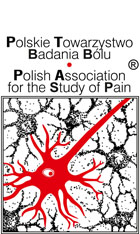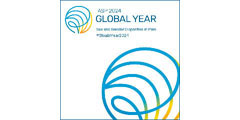Pain is a private percept that arises in a conscious brain, typically in response to a noxious provoking stimulus, but sometimes in the absence of a stimulus.
The relation of the percept to the stimulus is variable, and depends on the individual's prior expectations and beliefs, and on his/her cognitive and emotional state, not just on the nature of the stimulus itself. The nervous system may react to noxious stimuli with autonomic changes (e.g. in blood pressure), and even with adaptive behavioral responses, in the absence of a conscious pain percept.
Likewise, there are circumstances in which the presence of pain is ambiguous, such as when the individual is unable to report on his/her conscious percept, or with reference to animals. In these situations, the word "nociception" is used instead of the word "pain" to express that the nervous system has detected the noxious stimulus without necessarily implying that a pain percept was evoked.
M. Devor.
Definitions (Source: IASP Committee on Taxonomy, Update May 22 2012)
- Pain
- Allodynia*
- Analgesia*
- Anasthesia dolorosa*
- Causalgia*
- Central Pain
- Dysesthesia
- Hyperalgesia*
- Hyperpathia
- Hypoalgesia*
- Hypoesthesia*
- Neuralgia
- Neuritis*
- Neuropathic Pain*
- Central Neuropathic Pain*
- Peripheral Neuropathic Pain*
- Neuropathy*
- Nociception*
- Nociceptive Neuron*
- Nociceptive Pain*
- Nociceptive Stimulus*
- Nociceptor*
- Noxious Stimulus*
- Pain Threshold*
- Pain Tolerance Level
- Paresthesia
- Sensitization
- Central Sensitization
- Peripheral Sensitization
Pain
An unpleasant sensory and emotional experience associated with actual or potential tissue damage, or described in terms of such damage.
Note: The inability to communicate verbally does not negate the possibility that an individual is experiencing pain and is in need of appropriate pain-relieving treatment. Pain is always subjective. Each individual learns the application of the word through experiences related to injury in early life. Biologists recognize that those stimuli which cause pain are liable to damage tissue. Accordingly, pain is that experience we associate with actual or potential tissue damage. It is unquestionably a sensation in a part or parts of the body, but it is also always unpleasant and therefore also an emotional experience. Experiences which resemble pain but are not unpleasant, e.g., pricking, should not be called pain. Unpleasant abnormal experiences (dysesthesias) may also be pain but are not necessarily so because, subjectively, they may not have the usual sensory qualities of pain. Many people report pain in the absence of tissue damage or any likely pathophysiological cause; usually this happens for psychological reasons. There is usually no way to distinguish their experience from that due to tissue damage if we take the subjective report. If they regard their experience as pain, and if they report it in the same ways as pain caused by tissue damage, it should be accepted as pain. This definition avoids tying pain to the stimulus. Activity induced in the nociceptor and nociceptive pathways by a noxious stimulus is not pain, which is always a psychological state, even though we may well appreciate that pain most often has a proximate physical cause.
Allodynia*
Pain due to a stimulus that does not normally provoke pain.
Note: The stimulus leads to an unexpectedly painful response. This is a clinical term that does not imply a mechanism. Allodynia may be seen after different types of somatosensory stimuli applied to many different tissues.
The term allodynia was originally introduced to separate from hyperalgesia and hyperesthesia, the conditions seen in patients with lesions of the nervous system where touch, light pressure, or moderate cold or warmth evoke pain when applied to apparently normal skin. Allo means "other" in Greek and is a common prefix for medical conditions that diverge from the expected. Odynia is derived from the Greek word "odune" or "odyne," which is used in "pleurodynia" and "coccydynia" and is similar in meaning to the root from which we derive words with -algia or -algesia in them. Allodynia was suggested following discussions with Professor Paul Potter of the Department of the History of Medicine and Science at The University of Western Ontario.
The words "to normal skin" were used in the original definition but later were omitted in order to remove any suggestion that allodynia applied only to referred pain. Originally, also, the pain-provoking stimulus was described as "non-noxious." However, a stimulus may be noxious at some times and not at others, for example, with intact skin and sunburned skin, and also, the boundaries of noxious stimulation may be hard to delimit. Since the Committee aimed at providing terms for clinical use, it did not wish to define them by reference to the specific physical characteristics of the stimulation, e.g., pressure in kilopascals per square centimeter. Moreover, even in intact skin there is little evidence one way or the other that a strong painful pinch to a normal person does or does not damage tissue. Accordingly, it was considered to be preferable to define allodynia in terms of the response to clinical stimuli and to point out that the normal response to the stimulus could almost always be tested elsewhere in the body, usually in a corresponding part. Further, allodynia is taken to apply to conditions which may give rise to sensitization of the skin, e.g., sunburn, inflammation, or trauma.
It is important to recognize that allodynia involves a change in the quality of a sensation, whether tactile, thermal, or of any other sort. The original modality is normally nonpainful, but the response is painful. There is thus a loss of specificity of a sensory modality. By contrast, hyperalgesia (q.v.) represents an augmented response in a specific mode, viz., pain. With other cutaneous modalities, hyperesthesia is the term which corresponds to hyperalgesia, and as with hyperalgesia, the quality is not altered. In allodynia, the stimulus mode and the response mode differ, unlike the situation with hyperalgesia. This distinction should not be confused by the fact that allodynia and hyperalgesia can be plotted with overlap along the same continuum of physical intensity in certain circumstances, for example, with pressure or temperature.
See also the notes on hyperalgesia and hyperpathia.
Analgesia
Absence of pain in response to stimulation which would normally be painful.
Note: As with allodynia (q.v.), the stimulus is defined by its usual subjective effects.
Anesthesia dolorosa
Pain in an area or region which is anesthetic.
Causalgia
A syndrome of sustained burning pain, allodynia, and hyperpathia after a traumatic nerve lesion, often combined with vasomotor and sudomotor dysfunction and later trophic changes.
Central pain
Pain initiated or caused by a primary lesion or dysfunction in the central nervous system.
Dysesthesia
An unpleasant abnormal sensation, whether spontaneous or evoked.
Note: Compare with pain and with paresthesia. Special cases of dysesthesia include hyperalgesia and allodynia. A dysesthesia should always be unpleasant and a paresthesia should not be unpleasant, although it is recognized that the borderline may present some difficulties when it comes to deciding as to whether a sensation is pleasant or unpleasant. It should always be specified whether the sensations are spontaneous or evoked.
Hyperalgesia*
Increased pain from a stimulus that normally provokes pain.
Note: Hyperalgesia reflects increased pain on suprathreshold stimulation. This is a clinical term that does not imply a mechanism. For pain evoked by stimuli that usually are not painful, the term allodynia is preferred, while hyperalgesiais more appropriately used for cases with an increased response at a normal threshold, or at an increased threshold, e.g., in patients with neuropathy. It should also be recognized that with allodynia the stimulus and the response are in different modes, whereas with hyperalgesia they are in the same mode. Current evidence suggests that hyperalgesia is a consequence of perturbation of the nociceptive system with peripheral or central sensitization, or both, but it is important to distinguish between the clinical phenomena, which this definition emphasizes, and the interpretation, which may well change as knowledge advances. Hyperalgesia may be seen after different types of somatosensory stimulation applied to different tissues.
Hyperesthesia
Increased sensitivity to stimulation, excluding the special senses.
Note: The stimulus and locus should be specified. Hyperesthesia may refer to various modes of cutaneous sensibility including touch and thermal sensation without pain, as well as to pain. The word is used to indicate both diminished threshold to any stimulus and an increased response to stimuli that are normally recognized.
Allodynia is suggested for pain after stimulation which is not normally painful. Hyperesthesia includes both allodynia and hyperalgesia, but the more specific terms should be used wherever they are applicable.
Hyperpathia
A painful syndrome characterized by an abnormally painful reaction to a stimulus, especially a repetitive stimulus, as well as an increased threshold.
Note: It may occur with allodynia, hyperesthesia, hyperalgesia, or dysesthesia. Faulty identification and localization of the stimulus, delay, radiating sensation, and aftersensation may be present, and the pain is often explosive in character.
Hypoalgesia
Diminished pain in response to a normally painful stimulus.
Note: Hypoalgesia was formerly defined as diminished sensitivity to noxious stimulation, making it a particular case of hypoesthesia (q.v.). However, it now refers only to the occurrence of relatively less pain in response to stimulation that produces pain. Hypoesthesia covers the case of diminished sensitivity to stimulation that is normally painful.
| The implications of some of the above definitions may be summarized for convenience as follows: | ||
|---|---|---|
| Allodynia | lowered threshold | stimulus and response mode differ |
| Hyperalgesia | increased response | stimulus and response mode are the same |
| Hyperpathia | raised threshold: increased response | stimulus and response mode may be the same or different |
| Hypoalgesia | raised threshold: lowered response | stimulus and response mode are the same |
The above essentials of the definitions do not have to be symmetrical and are not symmetrical at present. Lowered threshold may occur with allodynia but is not required. Also, there is no category for lowered threshold and lowered response if it ever occurs.
Hypoesthesia
Decreased sensitivity to stimulation, excluding the special senses.
Note: Stimulation and locus to be specified.
Neuralgia
Pain in the distribution of a nerve or nerves.
Note: Common usage, especially in Europe, often implies a paroxysmal quality, but neuralgia should not be reserved for paroxysmal pains.
Neuritis
Inflammation of a nerve or nerves.
Note: Not to be used unless inflammation is thought to be present.
Neuropathic pain*
Pain caused by a lesion or disease of the somatosensory nervous system.
Note: Neuropathic pain is a clinical description (and not a diagnosis) which requires a demonstrable lesion or a disease that satisfies established neurological diagnostic criteria. The term lesion is commonly used when diagnostic investigations (e.g. imaging, neurophysiology, biopsies, lab tests) reveal an abnormality or when there was obvious trauma. The term disease is commonly used when the underlying cause of the lesion is known (e.g. stroke, vasculitis, diabetes mellitus, genetic abnormality). Somatosensory refers to information about the body per se including visceral organs, rather than information about the external world (e.g., vision, hearing, or olfaction). The presence of symptoms or signs (e.g., touch-evoked pain) alone does not justify the use of the term neuropathic. Some disease entities, such as trigeminal neuralgia, are currently defined by their clinical presentation rather than by objective diagnostic testing. Other diagnoses such as postherpetic neuralgia are normally based upon the history. It is common when investigating neuropathic pain that diagnostic testing may yield inconclusive or even inconsistent data. In such instances, clinical judgment is required to reduce the totality of findings in a patient into one putative diagnosis or concise group of diagnoses.
Central neuropathic pain*
Pain caused by a lesion or disease of the central somatosensory nervous system. See neuropathic pain note.
Peripheral neuropathic pain*
Pain caused by a lesion or disease of the peripheral somatosensory nervous system. See neuropathic pain note.
Neuropathy*
A disturbance of function or pathological change in a nerve: in one nerve, mononeuropathy; in several nerves, mononeuropathy multiplex; if diffuse and bilateral, polyneuropathy.
Note: Neuritis (q.v.) is a special case of neuropathy and is now reserved for inflammatory processes affecting nerves.
Nociception*
The neural process of encoding noxious stimuli.
Note: Consequences of encoding may be autonomic (e. g. elevated blood pressure) or behavioral (motor withdrawal reflex or more complex nocifensive behavior). Pain sensation is not necessarily implied.
Nociceptive neuron*
A central or peripheral neuron of the somatosensory nervous system that is capable of encoding noxious stimuli.
Nociceptive pain*
Pain that arises from actual or threatened damage to non-neural tissue and is due to the activation of nociceptors.
Note: This term is designed to contrast with neuropathic pain. The term is used to describe pain occurring with a normally functioning somatosensory nervous system to contrast with the abnormal function seen in neuropathic pain.
Nociceptive stimulus*
An actually or potentially tissue-damaging event transduced and encoded by nociceptors.
Nociceptor*
A high-threshold sensory receptor of the peripheral somatosensory nervous system that is capable of transducing and encoding noxious stimuli.
Noxious stimulus*
A stimulus that is damaging or threatens damage to normal tissues.
Pain threshold*
The minimum intensity of a stimulus that is perceived as painful.
Note: Traditionally the threshold has often been defined, as we defined it formerly, as the least stimulus intensity at which a subject perceives pain. Properly defined, the threshold is really the experience of the patient, whereas the intensity measured is an external event. It has been common usage for most pain research workers to define the threshold in terms of the stimulus, and that should be avoided. However, the threshold stimulus can be recognized as such and measured. In psychophysics, thresholds are defined as the level at which 50% of stimuli are recognized. In that case, the pain threshold would be the level at which 50% of stimuli would be recognized as painful. The stimulus is not pain (q.v.) and cannot be a measure of pain.
Pain tolerance level*
The maximum intensity of a pain-producing stimulus that a subject is willing to accept in a given situation.
Note: As with pain threshold, the pain tolerance level is the subjective experience of the individual. The stimuli which are normally measured in relation to its production are the pain tolerance level stimuli and not the level itself. Thus, the same argument applies to pain tolerance level as to pain threshold, and it is not defined in terms of the external stimulation as such.
Paresthesia
An abnormal sensation, whether spontaneous or evoked.
Note: Compare with dysesthesia. After much discussion, it has been agreed to recommend that paresthesia be used to describe an abnormal sensation that is not unpleasant while dysesthesia be used preferentially for an abnormal sensation that is considered to be unpleasant. The use of one term (paresthesia) to indicate spontaneous sensations and the other to refer to evoked sensations is not favored. There is a sense in which, since paresthesia refers to abnormal sensations in general, it might include dysesthesia, but the reverse is not true. Dysesthesia does not include all abnormal sensations, but only those that are unpleasant.
Sensitization*
Increased responsiveness of nociceptive neurons to their normal input, and/or recruitment of a response to normally subthreshold inputs.
Note: Sensitization can include a drop in threshold and an increase in suprathreshold response. Spontaneous discharges and increases in receptive field size may also occur. This is a neurophysiological term that can only be applied when both input and output of the neural system under study are known, e.g., by controlling the stimulus and measuring the neural event. Clinically, sensitization may only be inferred indirectly from phenomena such as hyperalgesia or allodynia.
Central sensitization*
Increased responsiveness of nociceptive neurons in the central nervous system to their normal or subthreshold afferent input.
Note: See note for sensitization and nociceptive neuron above. This may include increased responsiveness due to dysfunction of endogenous pain control systems. Peripheral neurons are functioning normally; changes in function occur in central neurons only.
Peripheral sensitization*
Increased responsiveness and reduced threshold of nociceptive neurons in the periphery to the stimulation of their receptive fields.
Note: See note for sensitization above.






































